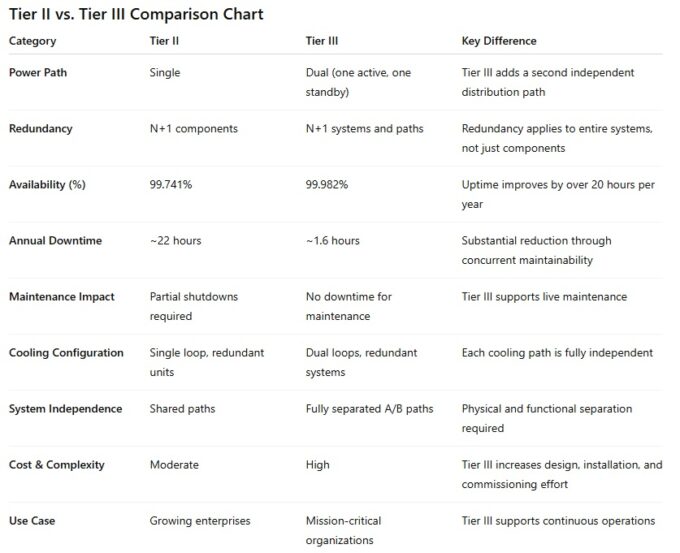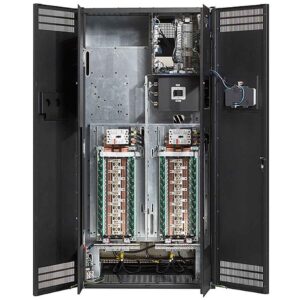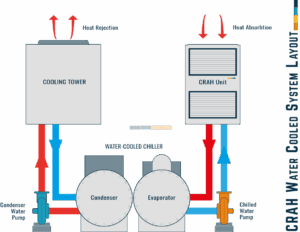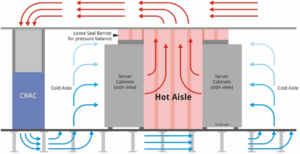Tier III Data Center Design Considerations for Architecture, Structural, and MEP Disciplines
Tier III data centers mark a major step up in reliability and resilience. Unlike Tier I and II, Tier III facilities are concurrently maintainable—meaning any major system can be taken offline for maintenance without interrupting IT operations.
This tier serves enterprises and mission-critical users who demand high uptime but seek a cost-effective balance compared to fully fault-tolerant Tier IV designs.
Understanding Tier III Data Centers
Tier III data centers feature multiple independent distribution paths for power and cooling, but only one is active at a time.
Each critical system includes N+1 redundancy, ensuring continuous operation even during maintenance or equipment failure.
This design achieves 99.982% availability, equal to about 1.6 hours of downtime per year.
Architectural Design Considerations
Architectural layouts for Tier III must support dual-system infrastructure and concurrent access.
Plan separate electrical and mechanical rooms to isolate redundant systems safely.
Provide two independent routes for cable trays, ducts, and piping—each serving separate distribution paths.
Increase service corridor widths to accommodate larger conduits and additional equipment.
Implement zoned layouts where one system can be de-energized while another remains active.
Specify fire-rated separations between redundant systems and ensure each path remains physically and environmentally protected.
Enhance security through multi-zone access controls and separate maintenance entries to minimize operational interference.
Structural Design Considerations
Tier III structural design must accommodate heavier loads and dual equipment sets.
Floor systems should support 200 psf or higher in IT and equipment spaces.
Include penetrations and sleeves for dual routing of cables, chilled water, and refrigerant lines.
Coordinate vibration control for redundant chillers, pumps, and generators.
Provide equipment anchorage and seismic restraints for both active and standby systems.
Structural framing should allow easy access for replacing or upgrading redundant systems without major demolition.
MEP Design Considerations
Electrical Systems
Electrical design defines the heart of Tier III reliability.
Provide two separate power distribution paths (A and B), with one path active and the other on standby.
Each path should contain redundant UPS modules, PDUs, and switchgear.
Use dual-corded IT equipment to connect simultaneously to both power paths.
Include automated transfer switches (ATS) to shift load between paths seamlessly.
Implement isolated maintenance bypasses to allow UPS or generator service without downtime.
Deploy advanced power monitoring systems that track real-time performance and enable predictive maintenance.

Mechanical Systems
Mechanical systems in Tier III facilities must sustain full cooling capacity during maintenance.
Design dual chilled-water or DX loops, each serving independent air handlers.
Each path should have N+1 redundancy in chillers, pumps, and CRAC units.
Integrate isolation valves and bypass piping to maintain operation during service.
Use hot-aisle/cold-aisle containment to improve thermal efficiency and prevent recirculation.
Control systems should automatically balance load between active and standby systems using a supervisory BMS platform.
Ensure clear access and redundancy zoning in mechanical rooms to support ongoing operation and safety compliance.
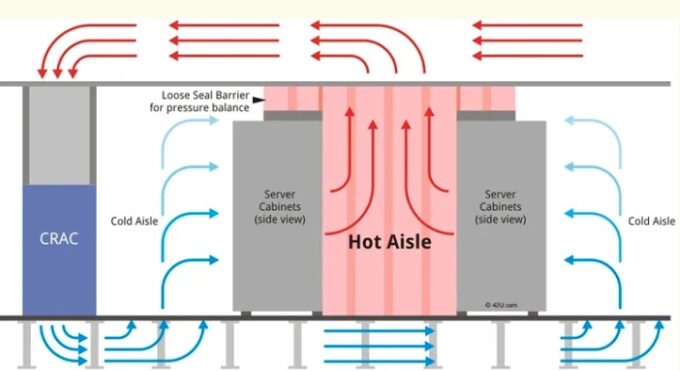
Designing for the Future
Tier III data centers often serve as the foundation for Tier IV upgrades.
Designers should plan space, structure, and systems to allow incremental expansion of redundant components or distribution paths.
A modular Tier III approach enables enterprises to scale reliability as workloads and business needs grow.
Conclusion
Tier III data centers deliver the reliability and flexibility demanded by modern enterprises.
By ensuring concurrent maintainability and redundant paths, they achieve uptime close to mission-critical levels at a lower cost than Tier IV.
Successful design requires tight coordination between architecture, structure, and MEP disciplines to ensure dual-path separation, system independence, and maintainability.

